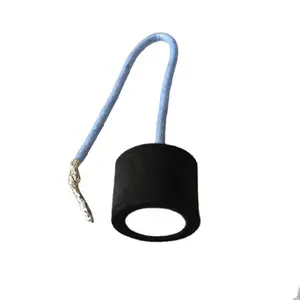Anemometer Overview
Anemometers are essential instruments for meteorology, aviation, and various industrial applications. These devices are specifically designed to measure the speed of the wind and, in some cases, its direction. The importance of accurate wind velocity measurements cannot be overstated, as they play a crucial role in weather forecasting, environmental studies, and the safety of air and sea navigation.
Types of Anemometers
There are several types of anemometers, each with unique features tailored to different use cases. The cup anemometer, one of the most recognized types, consists of rotating cups that measure wind speed. The hot wire anemometer uses a fine wire heated up and cooled by the wind to determine wind velocity. For those requiring precise measurements in turbulent conditions, the wind gauge anemometer is often preferred. Additionally, the digital anemometer offers a modern approach with electronic sensors for a more direct readout of wind conditions.
Applications of Anemometers
Anemometers serve a wide array of applications. In the field of meteorology, they are indispensable for gathering data to predict weather patterns. In aviation, they provide pilots with real-time data for safe takeoffs and landings. Wind turbines rely on wind speed measurement to optimize power generation. Furthermore, anemometers are used in the construction industry to ensure crane operations are conducted safely under appropriate wind conditions.
Features and Materials
The construction of anemometers varies depending on their type. Many are built with durable materials like aluminum for the external parts to withstand harsh weather conditions. Internal components often include sensitive materials that can accurately measure wind velocity. The wind speed meter typically features a digital display for easy reading, while more advanced models may offer data logging capabilities.
Advantages of Using Anemometers
Utilizing anemometers can significantly enhance the accuracy of weather predictions and safety in various operations. These instruments provide real-time data that can be critical in decision-making processes. The wind velocity meter is particularly beneficial for its precision in detecting even slight changes in wind speed. For those conducting environmental assessments, the wind measurer is an invaluable tool for tracking and analyzing wind patterns over time.
Selecting the Right Anemometer
Choosing the correct instrument to measure wind speed depends on the specific requirements of the task at hand. Factors to consider include the range of wind speeds to be measured, the environment in which the instrument will be used, and the level of precision required. Whether it is for a simple wind speed tester or a comprehensive system for detailed climatological studies, the selection is vast and varied to meet the needs of any application.






























 浙公网安备 33010002000092号
浙公网安备 33010002000092号 浙B2-20120091-4
浙B2-20120091-4